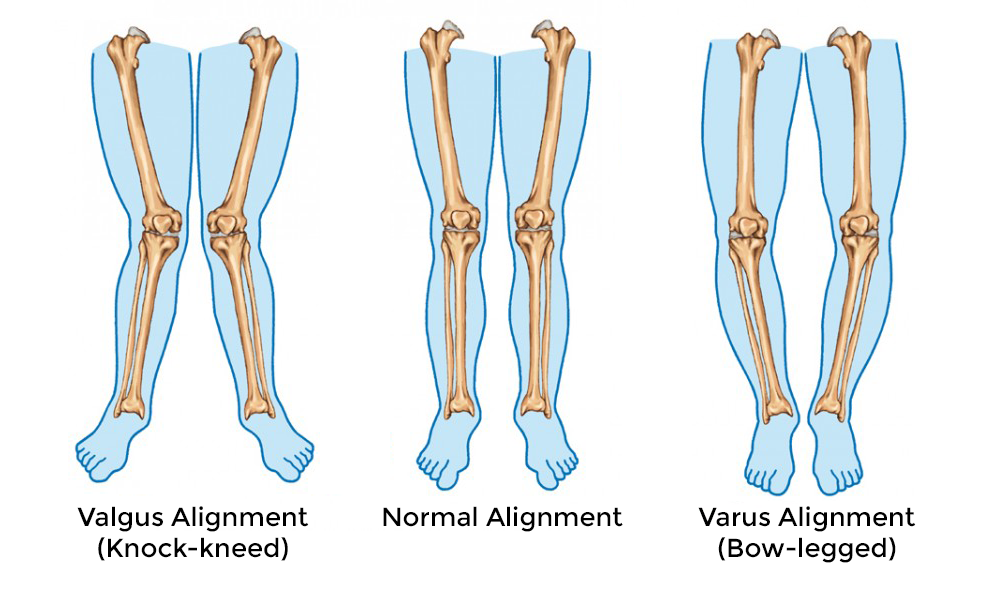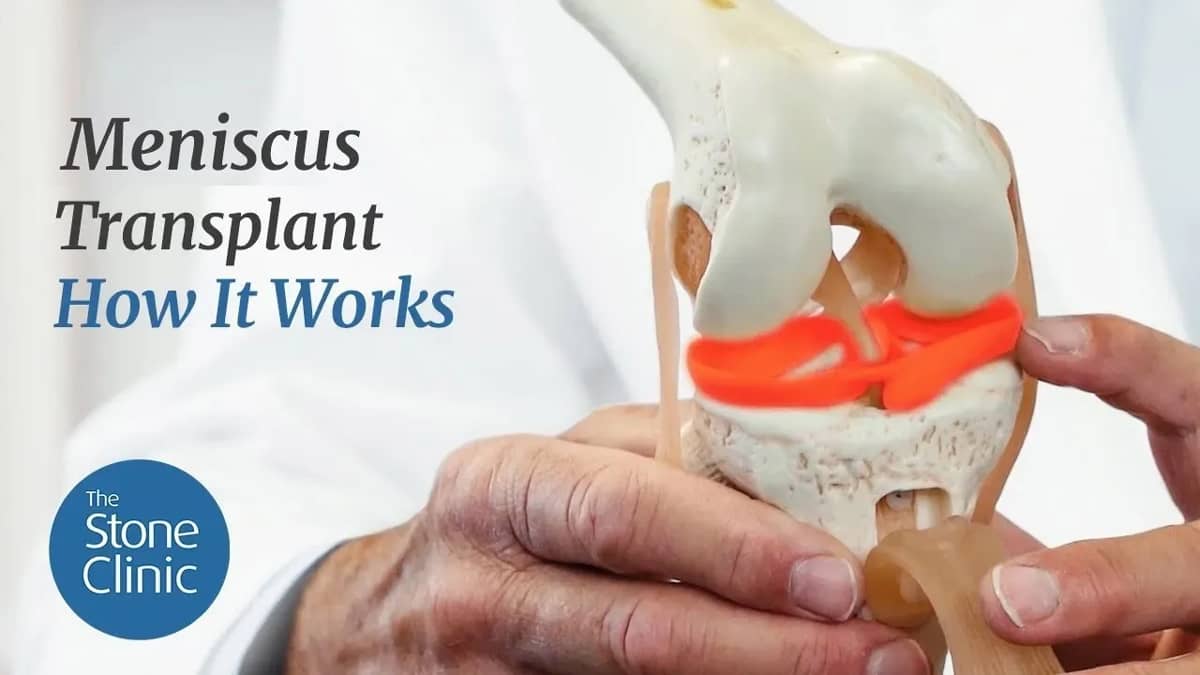Curved Legs, Fast Bodies, and Spare Parts
The fastest runners in the world often have bowed legs and toes that point in. For the rest of us, curved legs can sometimes be a big problem.

Why Curved Legs Hurt and the Role of Cartilage Loss
People have curvature in the legs for a number of reasons. Some are born with curved legs, become great athletes, and never have a problem. Other people with bowed or knock-knees develop significant pain, particularly when they lose their cartilage shock absorbers. For many people, the curvature worsens over time as a result of gradual cartilage loss and development of arthritis in one side of the knee, usually after an injury. The legs either become bowed or knock-kneed, consistent with either an inside or outside meniscus and articular cartilage loss. Like an engine that is out of tune, the wear patterns dramatically accelerate.
Loss of the meniscus and articular cartilage often happens to the young when playing sports. Traditionally, the torn meniscus is partially removed or the damaged articular cartilage is shaved smooth. While we have always known that cartilage loss leads to arthritis pain in later life and to the subsequent curvature of the bones, there were no alternatives.
Why Tissue Replacement Often Beats Osteotomy
Traditional orthopaedic advice is to treat even slightly curved, painful legs by re-arranging the tibia, called an osteotomy, a polite term for cutting the bone in half and wedging it open. This technique is designed to straighten the leg and make the person attached to it put more weight on the opposite side of the knee, hopefully reducing the wear and tear and pain in the affected side.
While there have been many happy patients and doctors with this, my view is that the real problem is the loss of the cartilage shock absorbers that led to the curvature. Therefore, it makes much more sense and involves much less risk to replace the missing tissues. Tissue replacement partially corrects the curvature, relieves the pain, and, most importantly, can restore the person to sports activities without the risk of an osteotomy or angle-changing procedures.
In fact, data published by our research group demonstrated no effect of “mal-alignment” on the improvement in pain and function in arthritic patients who underwent meniscus cartilage replacement with articular cartilage repair (Stone, JBJS Br 2010). At the end of the study, 79% of the 120 patients were still enjoying all the benefits of their meniscus replacement up to 12 years from surgery, independent of the amount of curvature in their legs. Based on the results seen up to the end of the study, we estimated that patients can expect an average of nearly 10 years of pain and function improvements if they have the cartilage replaced before having to consider joint replacement. Next, we went back and looked at our most active high-level athletic patients and found that they, too, were able to enjoy the same (in fact, better) long-lasting benefits from meniscus transplantation. Again, the amount of curvature in the legs did not affect the outcome.
So in my view, while I understand that curved legs lead to bad biomechanical alignment and that this abnormal pressure can ruin good biology, it is better to repair the bad biology first and see if the repair is good enough. Why? Because re-aligning the legs of people who have lived with their curvatures all their lives is asking for trouble with not just their knees, but with all the rest of the body that has grown up with their unique shapes. And trouble does happen. In one major study, the complications of leg re-alignment (loss of motion, infection, pain, stiffness) occurred in up to 40% of corrections. (Sterrett et al). While infection can occur in any surgery, if it occurs in cartilage replacement procedures the knee can be washed out and the process started over. It is not so easy for bony procedures.
The knee joint does poorly after cartilage injury and loss. Fortunately, we now have become experienced in replacement and regeneration of these crucial tissues. It is now possible to solve these problems as soon as they arise, rather than waiting for the inevitable increased curvatures and arthritis with pain and loss of function.
Ultimately, the solution is to repair, regenerate or replace the missing or injured tissues when they first present with injury. If this becomes the standard of care, we will not be “correcting” the curved legs after the cartilage horse has left the barn.
Experiencing undiagnosed knee pain? Enter your symptoms into our Knee Pain Symptom Checker to learn more about your injury and our biologic solutions for knee injuries.
---
Our BioKnee® program biologically reconstructs the knee joint without the use of artificial implants. Head here to learn about our alternative to knee replacement.


